We have extensively tested the recently announced Nest Audio speaker from Google. In this review we discuss, among other things, the impressive sound quality and the striking design.
The Nest Audio is the successor to the Google Home speaker and is now part of the Nest brand. The speaker has been improved on several points, including the audio reproduction. The design has also been overhauled. In this review we look and listen extensively to the new Nest Audio.
What is Nest Audio?
The Nest Audio is the latest WiFi speaker from Google and comes in addition to the Nest Mini and Nest Hub in the range. It is the largest, heaviest and – according to Google – best sounding speaker of the three. This model should be ideal not only for voice control but also for listening to music or podcasts.
Google has given the Nest Audio a completely different look than the Google Home speaker. The outside is completely wrapped in fabric, made from recycled bottles. Even the buttons are hidden behind the cover. The speaker weighs 1.18 kilograms and has a size of 175 x 124 x 78 mm. The heavy housing contains a 75mm woofer, a 19mm tweeter and three microphones. On the back we see a slide with which the microphone can easily be switched off.
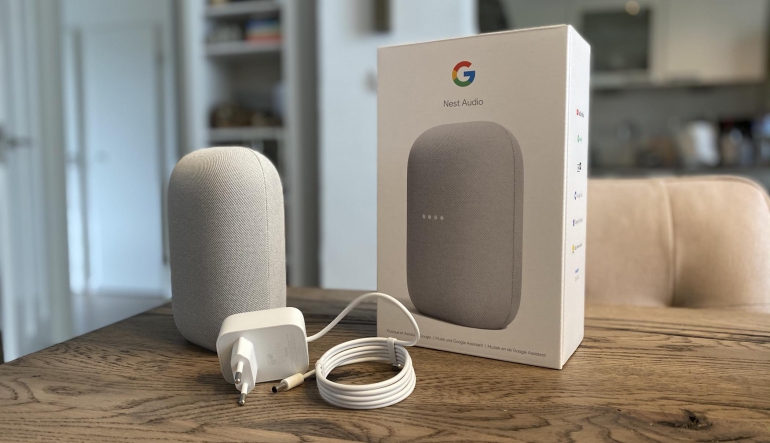
Naturally, the Nest Audio can be installed via the Google Home app, the Google Assistant is present and you can connect two Nest Audio speakers for stereo playback. A new function is Media EQ, which adjusts the audio reproduction to the content you are listening to. Just like previously launched WiFi speakers from Google, you can use streaming services such as Spotify, YouTube and Deezer via the Home app. Finally, it is possible to operate the smart home products linked to Google Home by voice.
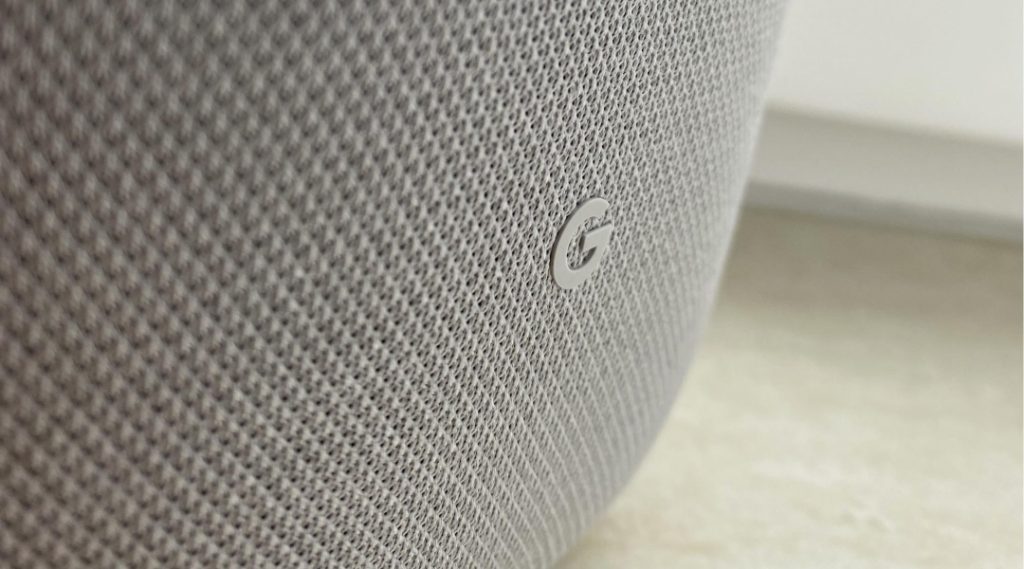
Design of Nest Audio WiFi speaker
Where the Nest Hub and Nest Mini were still partially covered with fabric, Google opted to use only fabric for the Nest Audio. Apart from the bottom and a slide on the back, there is no longer any smooth plastic to be seen. It has therefore become a simple-looking, sleek speaker. In terms of color, you can choose from gray and black, but you have to love the fabric finish. You like it or you don’t. Due to the sober and simple finish, the speaker simply disappears into the interior. The only disadvantage of all that dust is that it is less easy to clean, if someone with dirty fingers is on it.
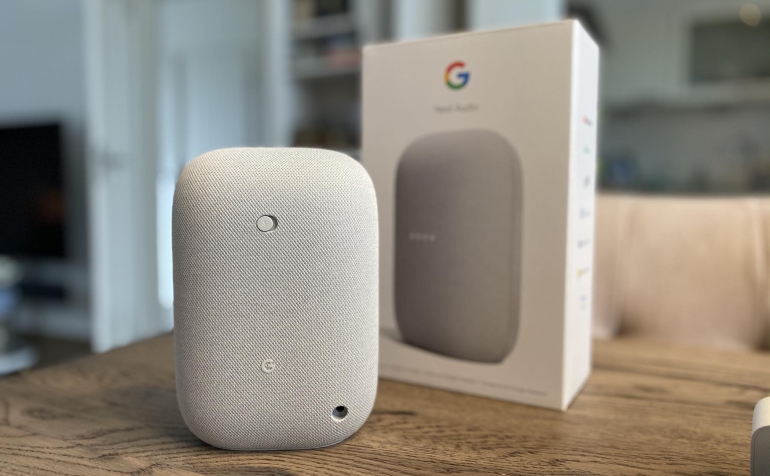
A positive point of the design is the slide on the back with which the microphone is switched off immediately. Not a software button but a hardware button that guarantees your privacy. That is also the only button we see again, because the control buttons are hidden behind the dust on the top of the speaker. Tapping on the corners increases or decreases the volume, and tapping in the middle starts or pauses the music.
Installation
The installation of the Nest Audio is exactly as you are used to from previously launched Google speakers. All you need is a smartphone with the Google Home app on it. This app guides you quickly and within minutes through the installation.
After unpacking, plug in the speaker and power outlet and wait for the Google Assistant to start talking. Then open the Home app and add a new device. The app will search immediately and the Nest Audio will appear on the screen within a few seconds. In a small number of steps you can select the room in which the speaker is located, train the voice assistant, link music services (if this has not been done with previous speakers) and activate Google Duo, so that you can make calls with and to the speaker. Once you have completed all steps, the speaker will immediately appear in your virtual home.
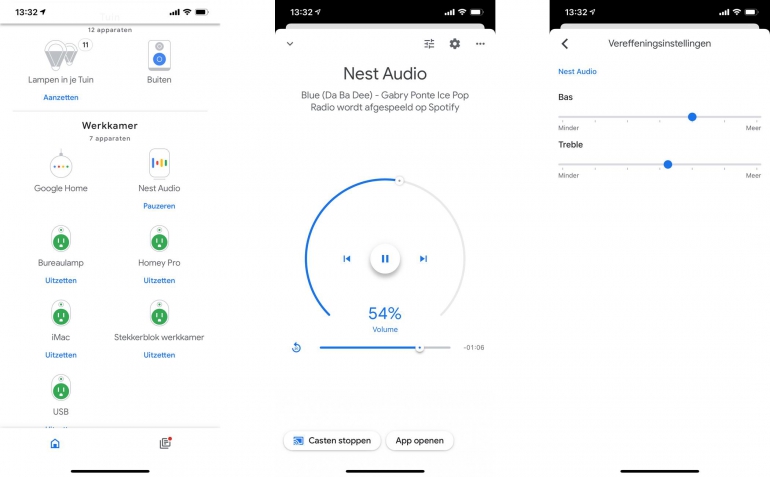
The Nest Audio also has a number of setting options in the Google Home app. For example, you can adjust the name and room, add the speaker to a group, activate the night mode and do not disturb function and display or not display personal results (calendar, mail, etc.). The settings are also limited for the audio output. You can only adjust the treble and bass.
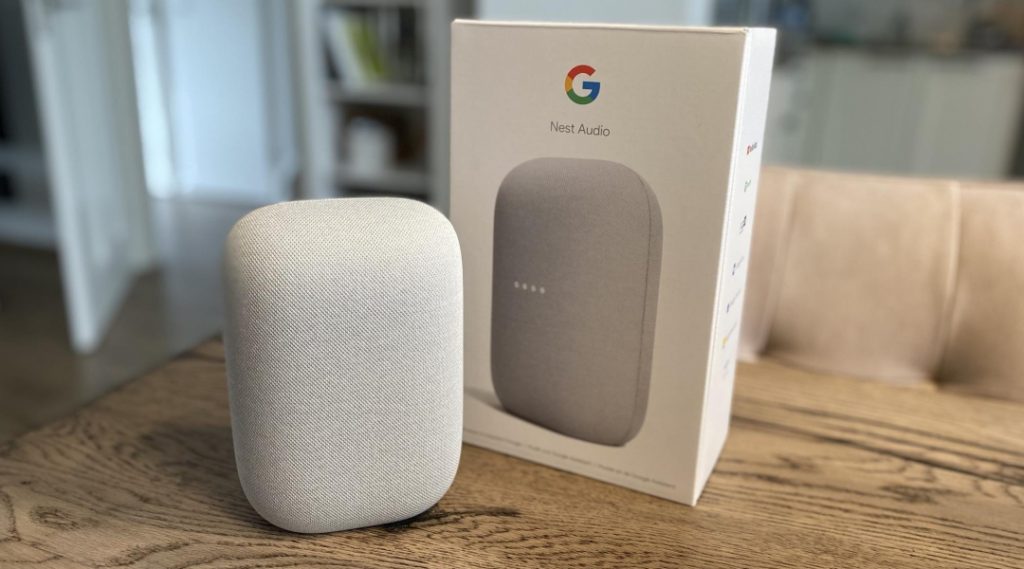
Service of Nest Audio WiFi speaker
The Nest Audio can be operated in three different ways, just like with other Google speakers. The most obvious method is of course voice control. You simply start with “Hey Google” and then ask something you want to know or give a command for something to be done. You can’t think of it as crazy or you can ask the Google Assistant. And that is also possible at a relatively great distance thanks to three sensitive microphones. Also on the other side of the room, which in our case is about 7 meters, the Nest Audio understands a command or question without any problems.
You can also control linked smart home devices with Google Home and thus the Nest Audio. What exactly you can control depends on whether devices support the Google Assistant. That support is still growing very fast, so that you can already link products from hundreds of brands. For example, we have linked the thermostat, lighting, television, speakers, smart plugs, vacuum cleaners and even the coffee maker. All can be controlled via your smartphone or the Nest speakers with specific commands. Recently you can even create routines and really automate your smart home. Different tasks can be performed in this way with one voice command.
In addition to voice control, you also have direct control via touch. You can play and pause music by tapping the top of the speaker. You use the left and right top side to decrease and increase the volume. Although you don’t see the buttons, it works quite intuitively. You are therefore used to it within 10 seconds.
In addition, you can always choose to operate the speaker with your mobile phone. This can be done in two ways: via WiFi and Bluetooth. You can manage the volume with the volume button on your smartphone, while you determine what you listen to via your favorite music streaming service. Some services have Chromecast built-in and then you can immediately start listening via the Nest Audio. You can use bluetooth mode for other services. You can also control the linking of Bluetooth devices via the Google Home app.
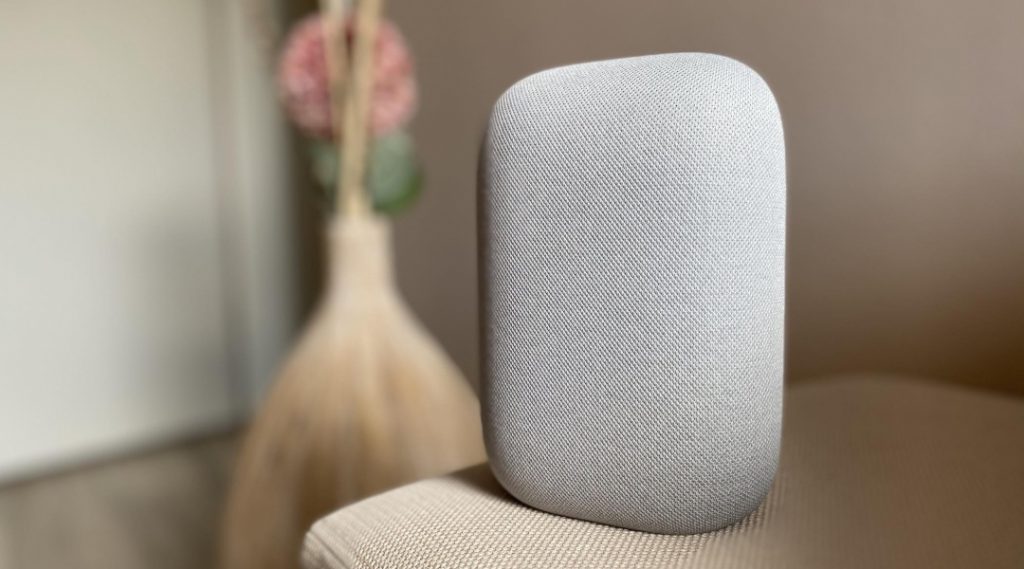
Audio quality
The main reason to go for the Nest Audio and maybe even replace your Google Home speaker is the audio reproduction. All other functions can also be used through other Google speakers. Google has therefore mainly focused on improving that audio reproduction. No separate sound modes or calibration options, but a system that adapts to the content and has better hardware for even better audio reproduction.
According to Google, the Nest Audio has a 50 percent stronger bass than the Google Home, and the speaker can also be turned up to 75 percent louder. The 75mm woofer should ensure that the bass reproduction is more impressive than on its predecessor, and the 15mm tweeter should provide clear highs. Finally, the housing has also been optimized to ensure minimal interference and vibrations. Media EQ is a new function that allows the speaker to automatically recognize what is playing and adjust its audio output accordingly.
Those are all nice words from Google itself, of course, but does the speaker really sound that good? The most important thing to consider is the price point. This Nest Audio costs 99 euros and that is more than affordable, looking at what you get for it. To be clear right away: the audio reproduction has definitely been improved compared to the Google Home and for 99 euros you get a lively and sleek-sounding WiFi speaker. It is a relatively small speaker, but it still produces a mature sound with which you can listen to music comfortably. The low tones are convincing and, above all, not overpowering, while the highs sound clear and remain intact in the overall picture. The Nest Audio knows how to find a good balance, regardless of the music style you listen to, which ensures a lively display. With classical music, the speaker manages to reproduce sufficient detail and largely maintain the liveliness. Of course there is no question of a wide sound field with one speaker, but fortunately it does not sound too closed and focused. If we put on some louder and more bombastic pop music, the Nest Audio also knows how to hold its own. The speaker maintains good control over the low tones, without the higher tones being pushed too much into the background. The mids are lively, warm and free. If we open the volume a bit further, there is slight distortion, but for this price segment we cannot complain about that. Especially in the low tones it remains tight, while the vocals are clearly and with sufficient detail pushed forward.
Although the speaker can be set quite loudly and thus can fill a medium-sized room, it is still more of a speaker for it, in a smaller space. The speaker comes out best at a volume of around 70 percent. If you link two for a stereo reproduction, the speaker would come into its own in a medium-sized room. With two speakers, the audio reproduction is expanded further and the whole comes to life a lot more.
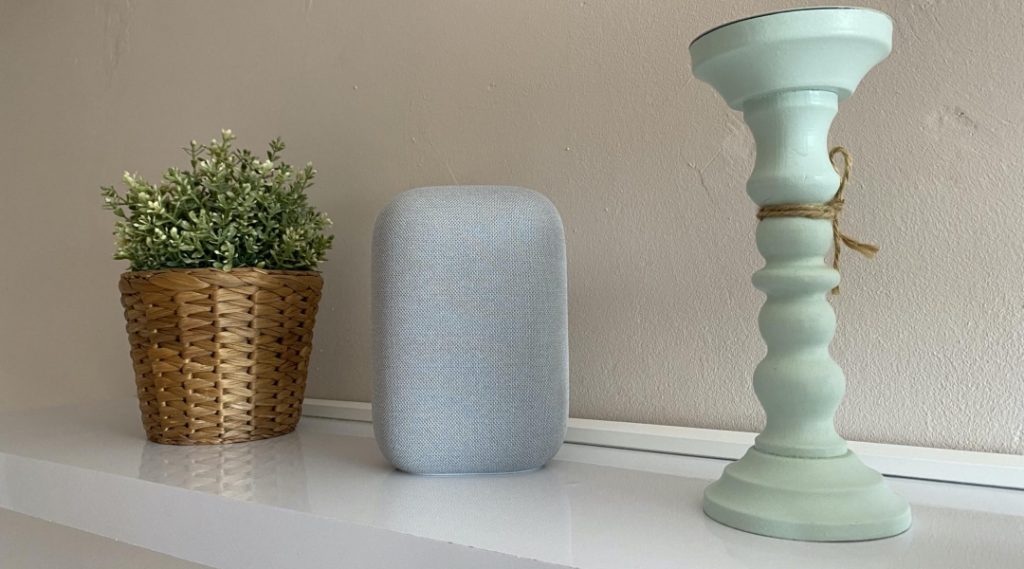
Conclusion
The Nest Audio has few downsides, especially with a price of 99 euros. Perhaps the only point is the design. You have to love that and it is a bit more difficult to keep clean, but on the other hand, the speaker falls nicely into the interior due to the unobtrusive design. The slider for the microphone is a plus and although the other physical buttons have disappeared, the operation of the Nest Audio is child’s play. In addition, this model is a Google speaker as we are used to, with all the possibilities that the Google Home app offers, including smarthome and voice control. The most important thing is the sound quality and Google has taken steps in this area. The Nest Audio delivers a comfortable audio reproduction for 99 euros, in which especially the low tones and the dynamics and balance stand out positively. It is an all-rounder that can handle all types of music. However, we would mainly use the speaker in small to medium-sized. If you place the speaker in a larger room, it is advisable to connect two for stereo reproduction. All in all, there are not many speakers for 99 euros that offer just as much, are just as smart and sound just as good. For example, the Nest Audio must have the Sonos (SL) for itself, but you pay significantly more for that. So if you are looking for a good-sounding speaker with a voice assistant, then the Nest Audio is definitely recommended.
Pros of Nest Audio WiFi speaker
- Very good value for money
- Easy installation and operation
- All the possibilities of the Google Assistant
- Mute button for the microphone
- Good audio quality
Negatives of Nest Audio WiFi speaker
- Not for larger spaces
- No connections
- Dust is more difficult to keep clean





